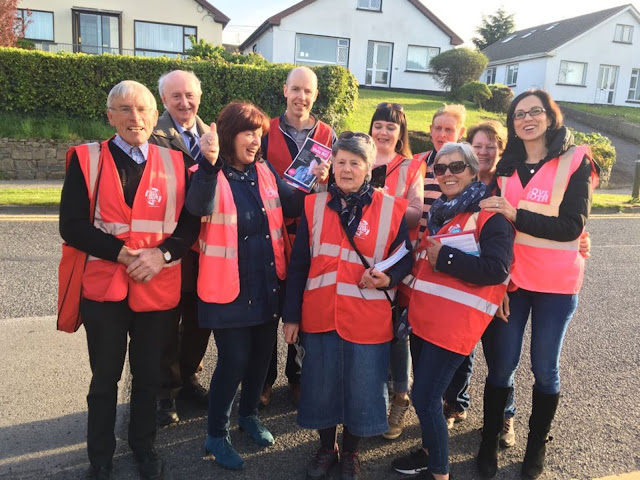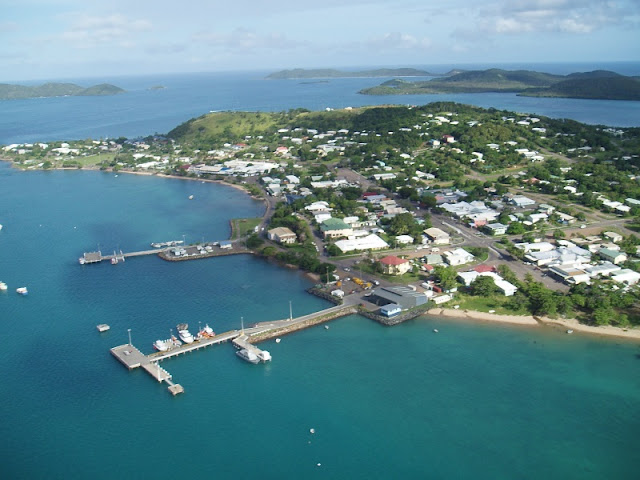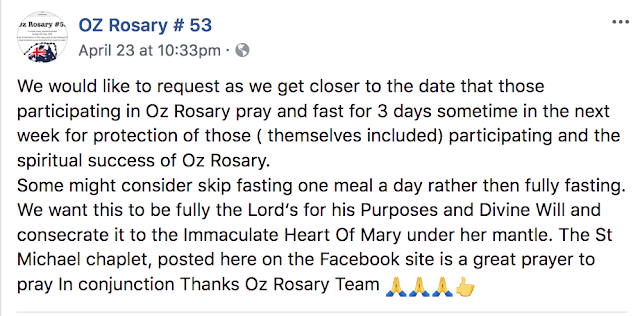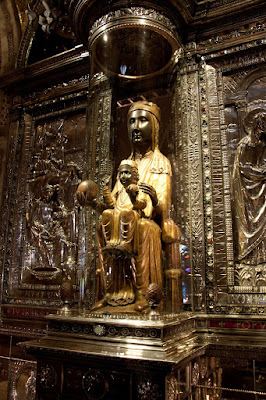 |
| Canvassers of Life Canvass helping save the unborn and ensure a "No" note on May 25. Photo: Twitter/Savethe8th |
In only a few days' time, on May 25, Ireland will vote on a referendum on whether or not to repeal the Eighth Amendment of its constitution: the pro-life provision that prevents the killing of a developing human being in the womb. Among many of the faithful Catholics who are fighting the good fight to ensure that the referendum results in a "No" vote are the folks of Life Canvass: a nationwide awareness effort of volunteers who travel from door-to-door having conversations, discussing the issues, answering questions, and disseminating information.
Life Canvass, now three years in the running, has yielded some impressive results. As noted on the Save Lives Save the 8th website, Life Canvass is the biggest grass roots movement in living memory with almost 3,000 canvassers grouped into 146 teams spread out in counties across Ireland. To date, 95% of Limerick has been canvassed and teams in Mullingar and Mayo are busy at it as well, canvassing seven days a week! And if that isn't impressive enough, the website went on to further report that, "The target of reaching 700,000 homes will be exceeded and every one of those powerful personal conversations is shifting more and more people to a No vote."
The daily effort of this extraordinary group of people has revealed just how essential their work has been and continues to be in the remaining days leading up to the referendum: many of those canvassed were undecided due to a lack of information. To remedy that canvassers have been properly informing citizens with the truth about the referendum: the facts about what happens to a baby when an abortion occurs; that the referendum is a "stepping stone" to abortion available on demand, that if passed would include the killing of babies identified with any "defects"; that everyone has the right to life; the killing of a human being in the womb can never be considered acceptable under any circumstances; the negative ramifications of abortion upon women and society; and how abortion could negatively impact Ireland for generations to come.
Part of the effort to disseminate information also includes the Protect The 8th's green booklet, Your Guide to the Referendum: Information on the Government’s Proposals: an essential reading for anyone that seeks to fully understand what a "Yes" or "No" vote would mean for women and their unborn children.
 |
| Canvassers out in Roscommon and Mayo. Photo: thejournal.ie/8 out of 10 voters in this area backed the Eighth Amendment in '83. We went to talk to locals this week |
Admittedly, I am very impressed with Life Canvass! I have been following this campaign for several months on Twitter and I cannot help but think of Saint John Paul II's Post-Synodal Apostolic Exhortation Christifideles Laici, on the vocation and mission of the lay faithful in the Church and in the World, in which he wrote, "A new state of affairs today both in the Church and in social, economic, political and cultural life, calls with a particular urgency for the action of the lay faithful. If lack of commitment is always unacceptable, the present time renders it even more so. It is not permissible for anyone to remain idle." (3)
Released in 1988, on the Feast of the Holy Family of Jesus, Mary and Joseph, Christifideles Laici, is more relevant today given Ireland's tragic abandonment of Catholic teaching that has resulted in a moral disorder: contraceptive devices and birth control pills have been available for decades; a 1992 referendum resulted in the option for women to travel to another country (England) in order to have an abortion, as well as the availability of information regarding abortion "services" in other countries; in 1995, Ireland's ban on divorce was removed through another referendum; and the referendum of 2015, ushered in "same-sex marriage."
On May 25, the government, supported by mainstream media and with the backing of wealthy foreign donors and organizations like Amnesty International, seeks to usher in a Culture of Death with the repeal referendum, which if passed would essentially amount to abortion available on demand.
 |
| Canvassers out in the coastal suburb of Dún Laoghaire. Photo: thejournal.ie/Anti-amendment Dún Laoghaire bucked the national trend in '83. We went to talk to locals this week |
There are many faithful in Ireland who have not remained idle! With the understanding of the gravity of what a "Yes" vote would mean for the unborn and the future of Ireland, thousands of faithful Catholics have been putting faith into action, doing their part to "Save the 8th" on a national level: the Rosary on the Coast for Life and Faith on November 26, 2017; the Rally For Life event just a couple of months ago on March 10 in Dublin; the Rosary at the Mass Rock For Life and Faith that followed on March 18; 40 Days/Nights Eucharist Reparation; 54 Day Rosary for Life; Eucharistic Adoration and Mass; public, private and parish vigils; fasts on bread and water (Wednesday and Friday); and novenas.
Life Canvass spotlights in a unique way just how committed the faithful in Ireland are to protecting and defending the unborn: individuals who brave all types of weather conditions, fight off fatigue, discouragement and other temptations, and do so on a daily basis (some for more than two years) canvassing counties across the nation, including at times hostile territory. With Life Canvass, the division within Ireland over abortion and the anger among some of the citizenry is directly felt by canvassers. And some take the "heat" with great patience and perseverance, knowing full well, that it is part of the battle. It is no small matter to publicly engage people in an awareness campaign: it can drain one both physically and emotionally, especially when confronted with verbal abuse and aggression.
 |
| Life Canvass in County Wexford. Photo: Twitter/Savethe8th |
Canvassers are fighting the good fight for the unborn and are doing so enthusiastically and undeterred with the hope that their actions, united to prayer, will draw God's Divine Intervention and Mercy upon the nation to uproot and remove the moral disorder among the landscape and restore Ireland to a Culture of Life.
Life Canvass demonstrates openly and publicly what faith put into action looks like, highlighting in the process the scriptural passage from James: What good is faith that does nothing in practice, it is thoroughly lifeless. (James 2:17)
In addition to being informed on the issues of abortion, canvassing also requires being knowledgeable of what the Catholic Church teaches about the killing of an innocent developing human being in the womb, and drawing from that teaching during each conversation. By doing so, the faithful Catholics of Life Canvass are demonstrating by their witness the importance of what we as Catholics are called to do: evangelize. Evangelization as Blessed Pope Paul VI put it in his Apostolic Exhortation Evangelii Nuntiandi, "...[I]s in fact the grace and vocation proper to the Church, her deepest identity." (14)
 |
| Canvassers knocking on doors in the town of Sligo. Photo: Twitter/Savethe8th |
Blessed Pope Paul VI's successor, St. John Paul II, responded to that vocation with a distinctive and efficacious missionary zeal. Not only did St. John Paul II publicly expose the evil of abortion on numerous occasions, but he dedicated an entire encyclical on the value and inviolability of human life and the many threats to it entitled, Evangelium vitae (Gospel of life). Particularly noteworthy is section fifty-eight which helps to explain why many Catholics are no longer aware and do not understand the truth about abortion, and why the government has even bothered to hold a referendum:
Among all the crimes which can be committed against life, procured abortion has characteristics making it particularly serious and deplorable. The Second Vatican Council defines abortion, together with infanticide, as an "unspeakable crime". [Gaudium et Spes, 51]The truth about abortion is understood by many who are canvassed by Life Canvass. In an article from the Irish News web site Independent.ie, Knocking on doors in hostile territories: What its like to canvass for the referendum when local voting trends are against you, one such individual, an elderly lady stated to canvassers, "Abortion is murder...It's as simple as that."
But today, in many people's consciences, the perception of its gravity has become progressively obscured. The acceptance of abortion in the popular mind, in behaviour and even in law itself, is a telling sign of an extremely dangerous crisis of the moral sense, which is becoming more and more incapable of distinguishing between good and evil, even when the fundamental right to life is at stake. Given such a grave situation, we need now more than ever to have the courage to look the truth in the eye and to call things by their proper name, without yielding to convenient compromises or to the temptation of self-deception. In this regard the reproach of the Prophet is extremely straightforward: "Woe to those who call evil good and good evil, who put darkness for light and light for darkness" (Is 5:20). Especially in the case of abortion there is a widespread use of ambiguous terminology, such as "interruption of pregnancy", which tends to hide abortion's true nature and to attenuate its seriousness in public opinion. Perhaps this linguistic phenomenon is itself a symptom of an uneasiness of conscience. But no word has the power to change the reality of things: procured abortion is the deliberate and direct killing, by whatever means it is carried out, of a human being in the initial phase of his or her existence, extending from conception to birth. (58)
That simple point was further spotlighted by Saint John Paul II in the same aforementioned encyclical on the Gospel of Life, when he wrote, "...[I] declare that direct abortion, that is, abortion willed as an end or as a means, always constitutes a grave moral disorder, since it is the deliberate killing of an innocent human being. (62)
 |
| Young volunteers canvassing, standing strong for life in Galway and Roscommon. Photo: Twitter/Savethe8th |
Moreover, human life is sacred! The Catechism of the Catholic Church explains why this is so, "Human life is sacred because from its beginning it involves the creative action of God and it remains for ever in a special relationship with the Creator, who is its sole end. God alone is the Lord of life from its beginning until its end: no one can under any circumstance claim for himself the right directly to destroy an innocent human being." (2258)
 |
| Some of the newest canvassers, including Cllr. Declan Harvey of Fianna Fáil (the Republican Party) handing out Protect The 8th's green referendum booklet, in Tullamore, County Offaly. Photo: Twitter/Savethe8th |
The Together For Yes anti-life campaign has even tried to exploit the negligence of the medical staff at University Hospital Galway, who were responsible for the controversial death of Savita Halappanavar and her baby in 2012, claiming that the Eight Amendment was a contributing factor to her death, "Even though she was miscarrying and sick, she was refused a termination [abortion] because there was a foetal heartbeat. As a result, she contracted sepsis and died. If doctors had intervened earlier, the issue of sepsis would not have arisen and she would not have died." The true story about Savita and her baby was captured in a well-made documentary film: A Silent Killer: Savita's Story.
None of what the anti-life campaign promotes and disseminates negates the truth about abortion: that it is the killing of a developing human being in the womb and that each human being has a right to life.
And that truth was embodied in the life of Saint Gianna Beretta Molla—a devout Catholic doctor from Lombardy, Italy, who put God first in everything and allowed her Christian faith to permeate every aspect of life—whose unwavering adherence to God's Holy Law and belief in the sacredness of human life was exemplified by the willing sacrifice of her own life for the life of her unborn child in 1962.
Ireland responded very positively to the "Eighth Amendment Referendum" in 1983; a referendum that was held to vote on the inclusion of a pro-life provision in its constitution—approved by 67% of the population—which states, “The State acknowledges the right to life of the unborn and, with due regard to the equal right to life of the mother, guarantees in its laws to respect, and, as far as practicable, by its laws to defend and vindicate that right.” In a few days time, Ireland will have another opportunity to choose life by keeping the Eighth Amendment, responding once again to St. John Paul II's homily of October 1, 1979, in Limerick:
And so I say to all, have an absolute and holy respect for the sacredness of human life from the first moment of its conception. Abortion, as the Vatican Council stated, is one of the "abominable crimes" (Gaudium et Spes, 51). To attack unborn life at any moment from its conception is to undermine the whole moral order which is the true guardian of the well-being of man. The defence of the absolute inviolability of unborn life is part of the defence of human rights and human dignity. May Ireland never weaken in her witness, before Europe and before the whole world, to the dignity and sacredness of all human life, from conception until death. (6)In that homily St. John Paul II—as part of his Apostolic Journey to Ireland in 1979, which lasted from September 29 to October 1—demonstrated how seriously he understood the Church's vocation to evangelize. It was a timely "visit" that positively impacted the 1983 referendum. Here is more from that homily:
Lay people today are called to a strong Christian commitment: to permeate society with the leaven of the Gospel, for Ireland is at a point of decision in her history. The Irish people have to choose today their way forward. Will it be the transformation of all strata of humanity into a new creation, or the way that many nations have gone, giving excessive importance to economic growth and material possessions while neglecting the things of the spirit? The way of substituting a new ethic of temporal enjoyment for the law of God? The way of false freedom which is only slavery to decadence? Will it be the way of subjugating the dignity of the human person to the totalitarian domination of the State? The way of violent struggle between classes? The way of extolling revolution over God?
Ireland must choose. You the present generation of Irish people must decide; your choice must be clear and your decision firm. Let the voice of your forefathers, who suffered so much to maintain their faith in Christ and thus to preserve Ireland's soul, resound today in your ears through the voice of the Pope when he repeats the words of Christ: "What will it profit a man, if he gains the whole world, and forfeits his life?" (Mt 16 :26). What would it profit Ireland to go the easy way of the world and suffer the loss of her own soul? (3)
Your country seems in a sense to be living again the temptations of Christ: Ireland is being asked to prefer the "kingdoms of the world and their splendour" to the Kingdom of God (cf. Mt 4 :8). Satan, the Tempter, the Adversary of Christ, will use all his might and all his deceptions to win Ireland for the way of the world. What a victory he would gain, what a blow he would inflict on the Body of Christ in the world, if he could seduce Irish men and women away from Christ. Now is the time of testing for Ireland. This generation is once more a generation of decision. (4)Keep Life Canvass and Ireland in your Mass, Rosary, Divine Mercy Chaplet, and fasting intentions. Pray for the intercession of St. John Paul II that God's Divine Mercy and Intervention be drawn upon Ireland.
Thank God for all the faithful Catholics in Ireland.









